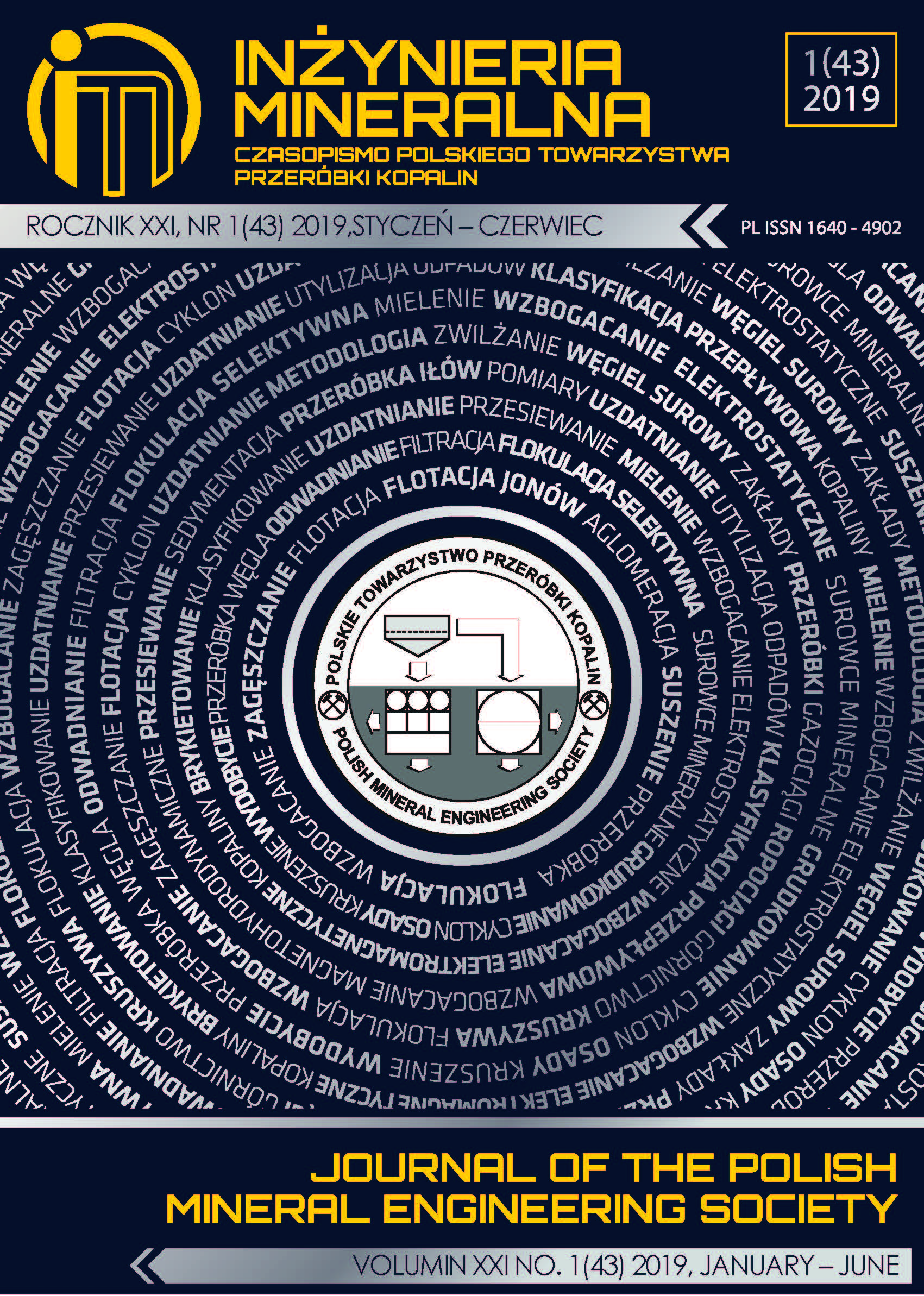Characterisation of Purified Gypsum and Insoluble Impurities Obtained from Phosphogypsum Waste
Abstract
In this study, the chemical and phase composition of two samples of phosphogypsum from the waste dumps of the Industry of Chemical
Products “Elixir – Prahovo” (Serbia) were examined, as well as the possibility of recrystallization of gypsum from an aqueous
suspension of phosphogypsum. The negative effect of higher temperatures on the solubility of calcium sulfate (13.08 mmol/dm3 at
95°C vs. 15.43 mmol/dm3 at 40°C) was utilized. In several repeated cycles, calcium sulfate component was progressively dissolved
in water at room temperature and then precipitated at 100°C, using the same liquid phase throughout the experiment. Therefore,
phosphogypsum was separated into recrystallized (purified) gypsum, insoluble residue and supernatant, and the mass balance for
the experiment was calculated. Elemental, XRD and SEM-EDS analyses were performed on raw phosphogypsum, purified gypsum
and insoluble residue. The whiteness of raw phosphogypsum and purified gypsum were determined and compared. The main objective
of the study was to investigate the nature of insoluble impurities, in order to define and optimize the methods for their removal
during a potential industrial processing of phosphogypsum.
Copyright (c) 2021 Lazar KALUDJEROVIC,Josip ISEK,Nikola VUKOVIC,Maja MILOSEVIC

This work is licensed under a Creative Commons Attribution-ShareAlike 4.0 International License.
This journal permits and encourages authors to post items submitted to the journal on personal websites or institutional repositories both prior to and after publication, while providing bibliographic details that credit, if applicable, its publication in this journal.







.png)
